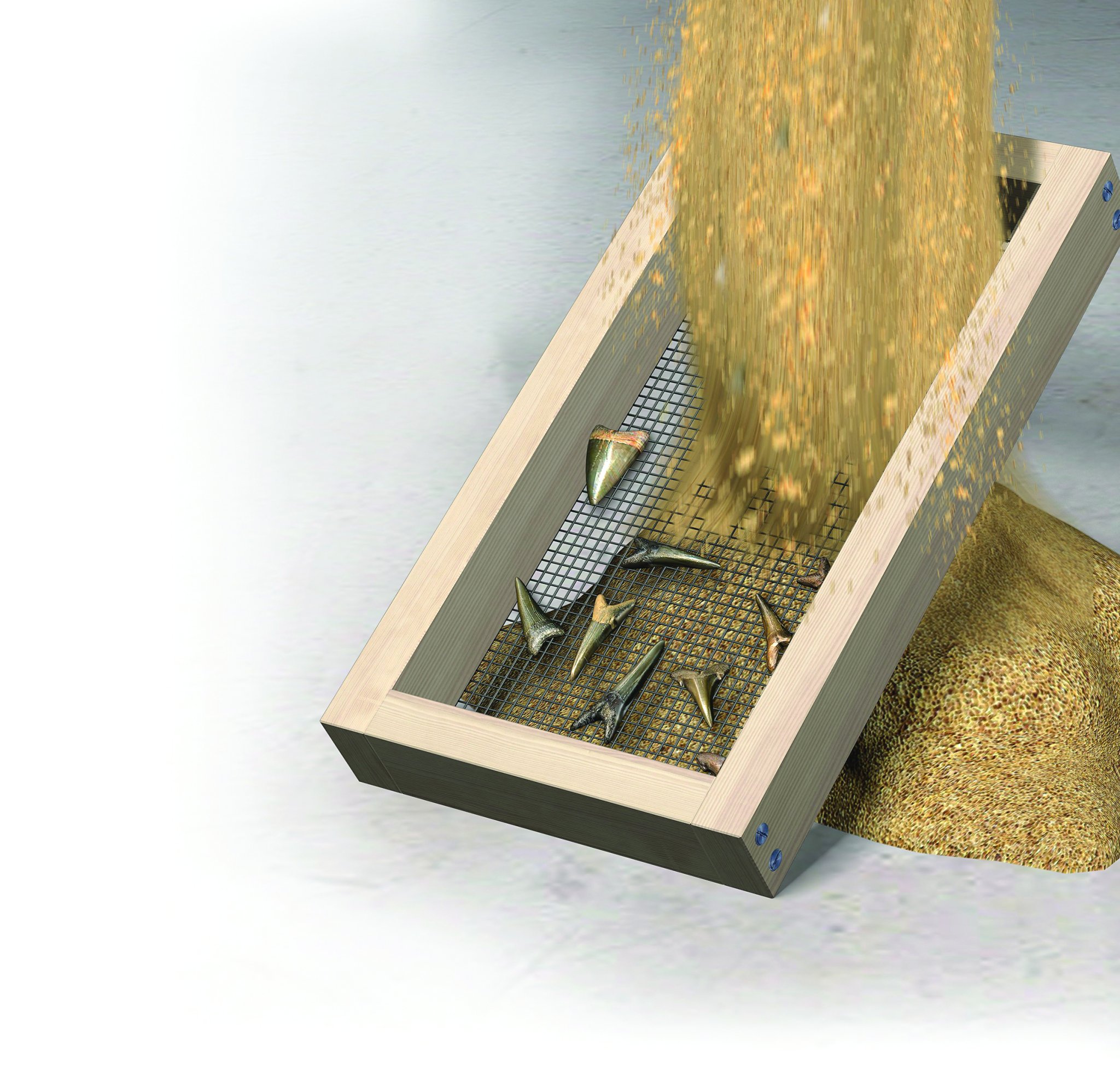


You don’t need to be a paleontologist or travel through remote canyons to find exquisite fossils. The teeth, shells, and bones of ancient animals could lurk in a creek, quarry, or on a beach near you. Once you find a good location—the map below shows a bunch of spots—you’ll need to separate fossils from surrounding soil. A mesh-lined letter tray works in a pinch, but the best option is to build your own sifter. We like this rig made from ¼-inch hardware cloth and 1-inch-by-2-inch planks. Wood floats, so your sieve won’t sink, and the wire can catch shark or ray teeth, small bones, and even ammonite casts. It works best in water, where erosion has done most of the hard work; unwanted sand, dirt, and pebbles will wash out of the bottom without spreading dust.
Time: 1 hour
Cost: About $10
Difficulty: 1/5

Tools
1. Measuring tape
2. Felt-tip marker
3. Four bar clamps
4. Saw
5. Cordless drill
6. Metal snips
7. Staple gun
8. Hammer
Materials (per sifter)
1. Six of 1-inch-by-2-inch wood
2. Eight 1 1/4-inch-long-wood screws
3. 1 sq. foot of hardware cloth (galvanized, with 1/4-inch holes)
Instructions
A) Measure: Use the measuring tape and felt-tip marker to divide the plank of wood into two 16-inch pieces and two 7-inch ones.
B) Cut: Clamp down the wood, and saw across the markings. The four pieces will comprise the sifter’s frame. (Save the scrap for any additional sifters.)
C) Screw: Place the short pieces between the ends of the long ones, forming a rectangle, and clamp them down. Drive two screws through each corner.
D) Snip: Measure an 8-inch-by-16-inch rectangle of hardware cloth. Snip it out, being careful to avoid leaving any sharp prongs.
E) Attach: Staple the wire to one side of the frame. Five staples across each short piece and 10 across each longer piece will do. Hammer in any exposed prongs.
F) Sift: Load the sifter with a few scoops of fossil-rich earth. Shake to remove sand, mud, and pebbles. Examine the catch to see if you got lucky.
Warning: Protect yourself from sharp edges and flying debris with safety gloves and eyewear. When hunting fossils, don’t break the law! Always get permission and permits.
This article originally appeared in the January 2014 issue of Popular Science.
